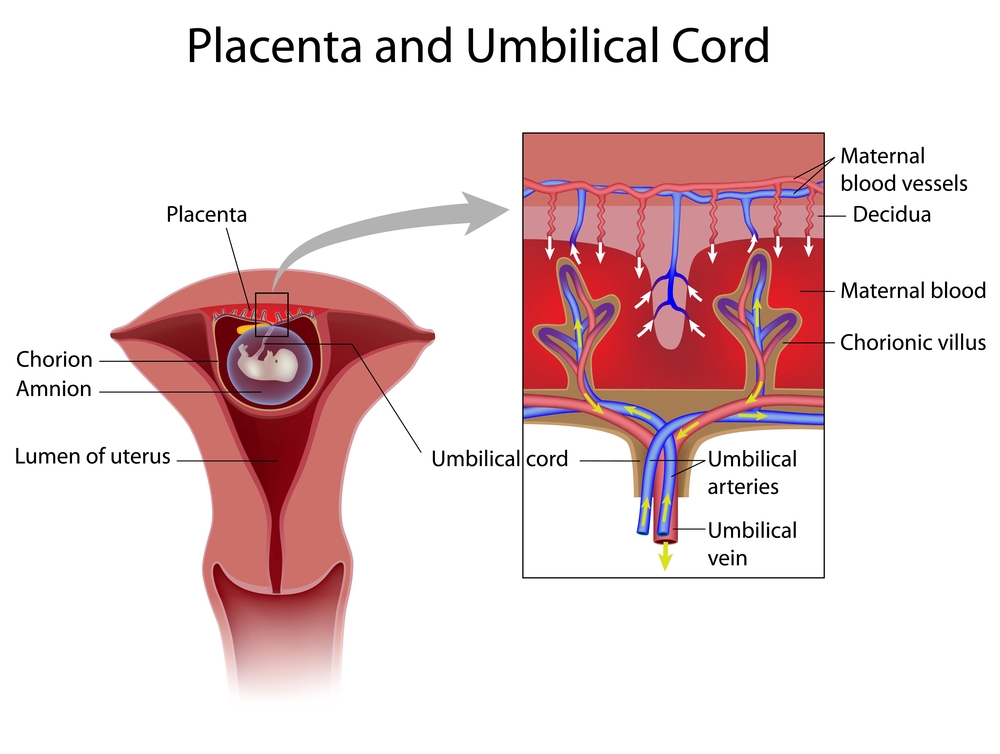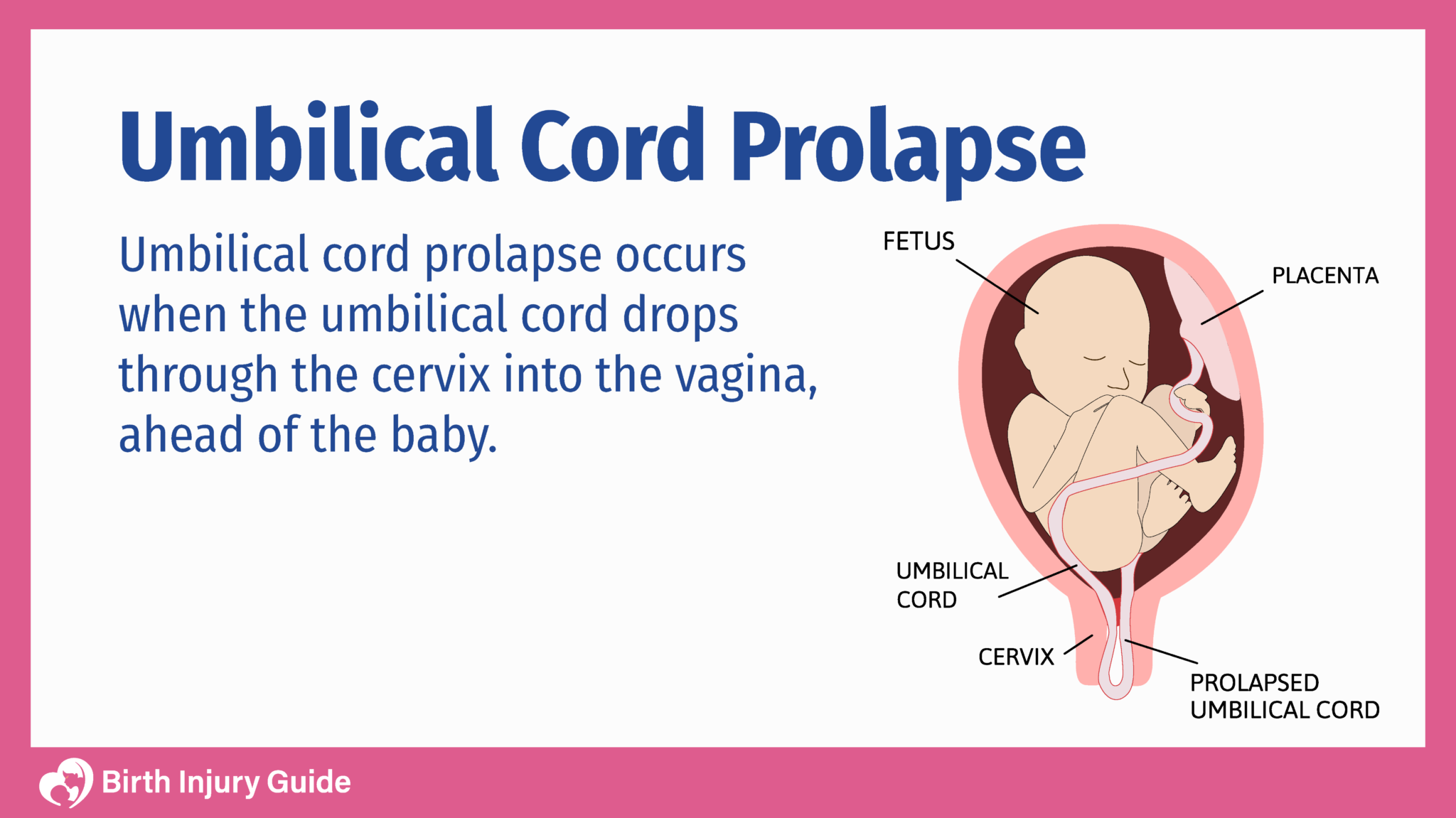
Umbilical Cord Prolapse
When we think of a woman beginning labor, we often think of the “water breaking” as the first sign. Unfortunately, sometimes labor does not begin or progress in the traditional way we may think or doctors may want. Sometimes the membranes rupture (water breaking) prematurely, which can be problematic and even sometimes dangerous. And other times, the umbilical cord can drop below the baby, and can even pass through the cervix before the baby is ready to be delivered. This is an umbilical cord prolapse.
In severe cases, the umbilical cord can even stick out from the vagina, which is incredibly dangerous. This can block blood flow to the baby.
The Umbilical Cord
The umbilical cord is the tube-like structure that connects a mother to a growing fetus. This cord is the lifeline that transports nutrients to the fetus and transports waste away from the fetus. The umbilical cord has three blood vessels that carry oxygenated blood and nutrients – one vein and two arteries.

What is Umbilical Cord Prolapse?
Umbilical cord prolapse is a problem that occurs when the umbilical cord drops through a mother’s open cervix during labor and delivery. Consequently, the umbilical drops before the infant’s head during delivery, which can cause the cord to get trapped or wrapped around the baby’s body. It also increases the risk of umbilical cord compression, which is an obstetrical emergency.
When the umbilical cord is compressed, oxygen and blood cannot adequately reach the baby. This places the baby at risk for oxygen deprivation, which can lead to brain damage, hypoxic ischemic encephalopathy (HIE) and other serious long-term consequences.
Umbilical cord prolapse is not incredibly common, occurring in around one out of every 300 births. That makes the overall incidence rate between 0.16% and 0.18%. Nonetheless, a prolapsed cord can be dangerous and should not be underestimated.
What Causes Umbilical Cord Prolapse?
The most common reasons for umbilical cord prolapse include:
- Premature rupture of the membranes
- Premature labor
- Multiples (twins, triplets, etc.)
- An excessive amount of amniotic fluid (polyhydramnios)
- An umbilical cord that’s unusually long
- Breech presentation
If physicians don’t detect and treat an umbilical cord prolapse quickly, the infant may suffer oxygen deprivation, leading to a host of medical issues, including long-term cognitive problems, cerebral palsy, and in severe instances, infant death.
Diagnosing a Cord Prolapse
Diagnosing an umbilical cord prolapse can only be done by medical exam. It can be diagnosed by palpating the cord during a pelvic exam, or by performing an ultrasound. Most often, a prolapsed cord will also result in low fetal heart rate, which is called bradycardia. Bradycardia is often the first sign of umbilical cord prolapse.

There are generally no outward signs of a cord prolapse that you can see or feel without the help of a doctor. The American Pregnancy Association states that,
“You may feel the cord in the birth canal if it prolapses, and may see the cord if it protrudes from your vagina.”
Treating an Umbilical Cord Prolapse
An umbilical cord prolapse is an obstetric emergency. If it occurs at home, you or someone with you should call 911 and get instructions from the operator. Next, you call your obstetrician. You will need to follow your doctor’s guidance as you get to help or help comes to you. You should avoid driving or moving positions too much, as that could apply more pressure to the umbilical cord and/or the baby’s head.
If you are at the hospital when a prolapse occurs, or get to the hospital quickly, there are three standard interventions that doctors consider. The intervention they use will depend on your individual situation. The three interventions include:
Amnioinfusion
Amnioinfusion is the process of delivering warm saline solution into the uterus via a catheter. This increases liquid volume in the uterus, which removes pressure from the umbilical cord because the baby, essentially, floats around it. Your healthcare team monitors the baby’s heart rate closely throughout this process.
Hands and Knees Delivery
If the mother is close to giving birth, doctors may recommend a hands and knees delivery. This is when the mother is on her hands and knees during delivery. This is only possible, however, if the mother is able to move and has not had a traditional epidural.
Once in the hands and knees position, the baby may move enough to ease delivery and remove pressure from the umbilical cord. A hands and knees delivery must happen quickly to avoid additional complications. Today, hands and knees deliveries are much less common. If the fetal heart rate drops, a c-section is generally immediate, and doctors do not attempt a hands and knees delivery.
C-Section Delivery
If fetal heart rate is low then doctors will most likely perform a c-section (Cesarean). The doctor or a nurse may insert their fingers into the mother’s vagina to hold the baby’s head off the umbilical cord. This happens any time after the amniotic sac breaks. The doctor or nurse will hold this position until the mother is in the operating room and the baby is ready for delivery.
If the cord prolapse is treated immediately, there may be no long-term consequences for the baby. However, the longer the delay in delivery, the greater the risk is for problems like brain damage or death.
What Happens After Delivery?
After delivery, the baby will be examined by doctors. If the baby doesn’t respond, doctors will perform CPR and will administer oxygen. The doctor will check the Apgar score and may order some tests. The baby will be monitored carefully at the hospital. The duration of his or her hospital stay will depend on the baby’s health.
Follow-up care also depends on your child’s health. A cord prolapse can cause HIE, brain damage or cerebral palsy. Your doctor should monitor symptoms and your child should have routine care to address any symptoms or concerns.
If you are concerned about how your doctor handled an umbilical cord prolapse, or if your child suffered a birth injury as a result of a prolapse, you may also want to speak with a birth injury lawyer. If your child’s injuries are the result of negligence, you may be entitled to compensation.
Start Your FREE Case Review Today
If you or your child is injured as a result of medical negligence, call us to learn more.
Sources:
- https://www.uptodate.com/contents/umbilical-cord-prolapse
- https://americanpregnancy.org/healthy-pregnancy/pregnancy-complications/umbilical-cord-prolapse-9158/
- https://my.clevelandclinic.org/health/diseases/12345-umbilical-cord-prolapse
- https://www.whattoexpect.com/pregnancy/pregnancy-health/complications/cord-prolapse.aspx
- https://americanpregnancy.org/healthy-pregnancy/pregnancy-complications/umbilical-cord-prolapse-9158/



